Abstract
Studies on the immune response against hapten-autologous protein carriers in mice, guinea-pigs and rabbits have shown that the new antigenic determinants introduced in the carrier molecule by the hapten coupling reaction play an important role in the induction of both immunity and tolerance to these conjugates. The present experiments were designed to elucidate the specificity of the new antigenic determinants induced (1) by different haptens through the same coupling procedure and (2) by the same hapten coupled by different procedures. The results showed that both the nature of the hapten and the coupling procedure played a role in the serological specificity of the new antigenic determinants.
Full text
PDF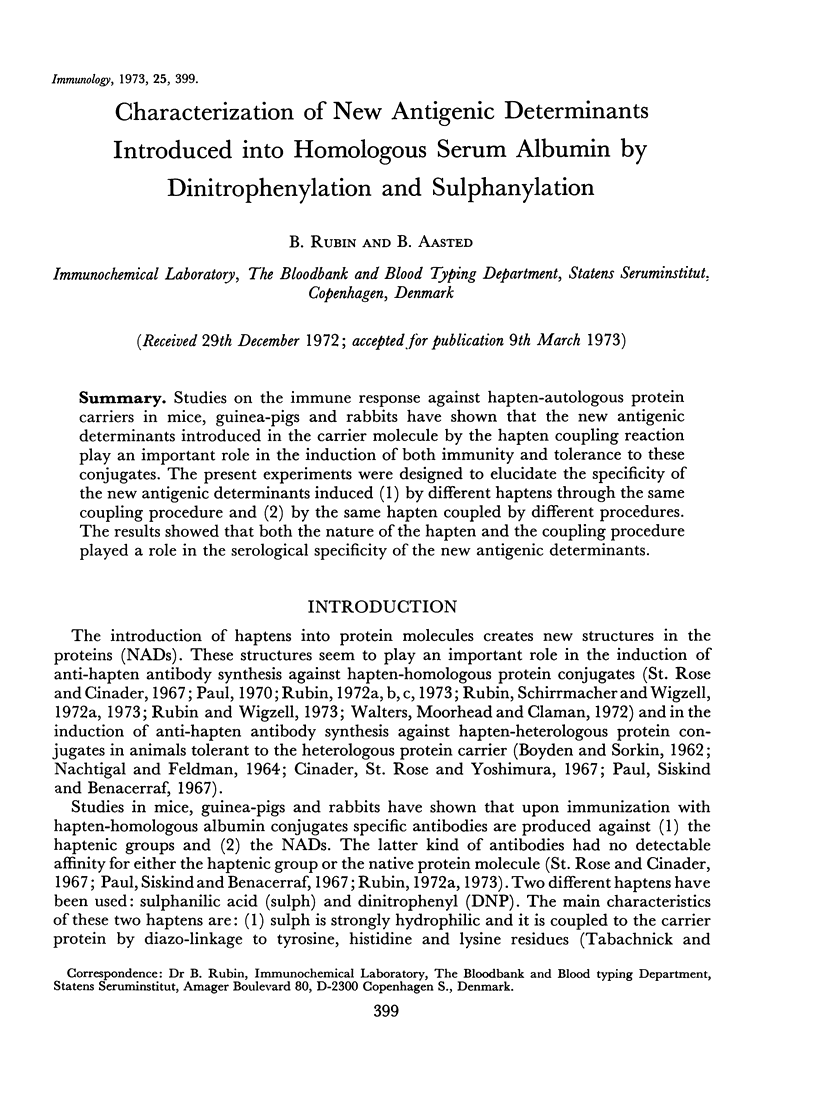
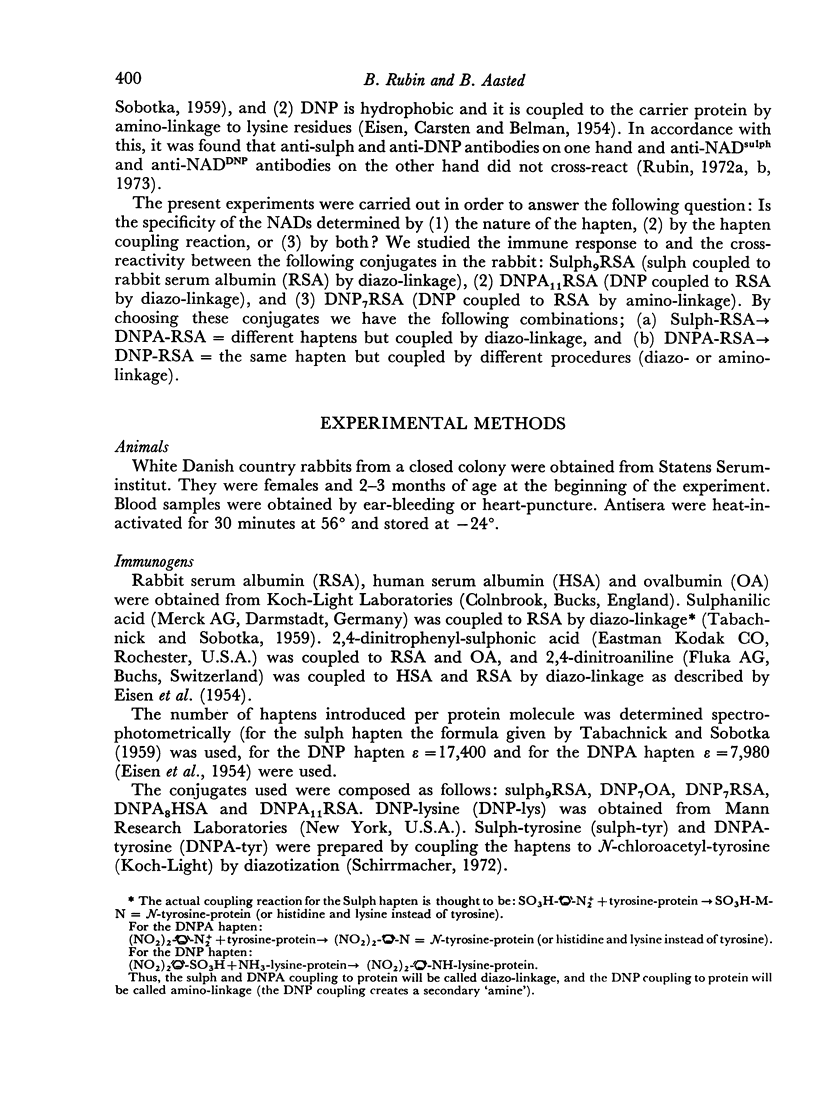
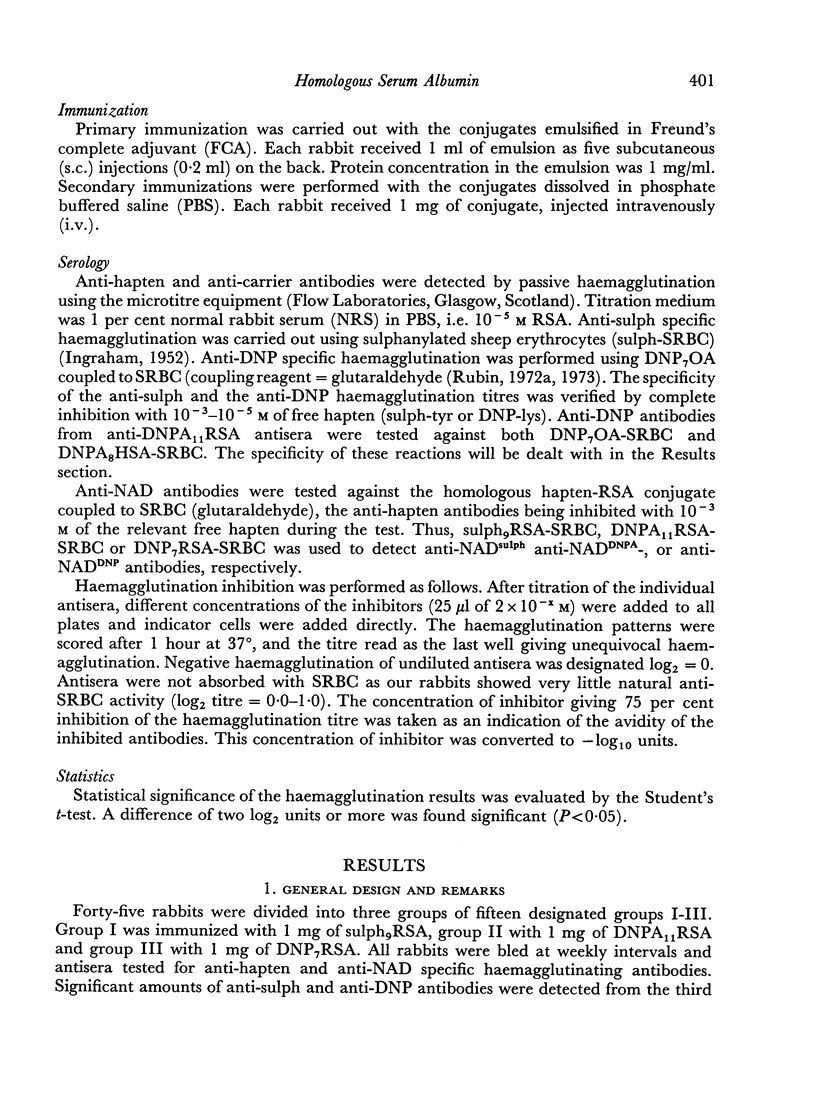
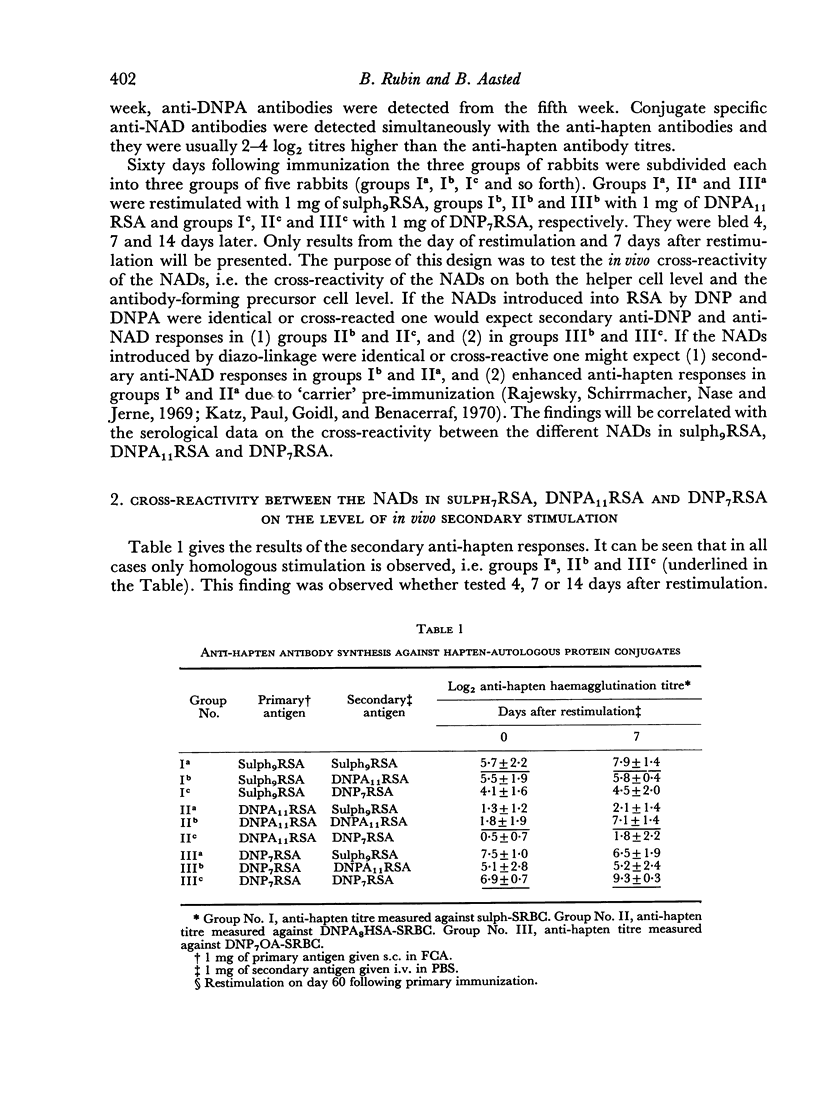
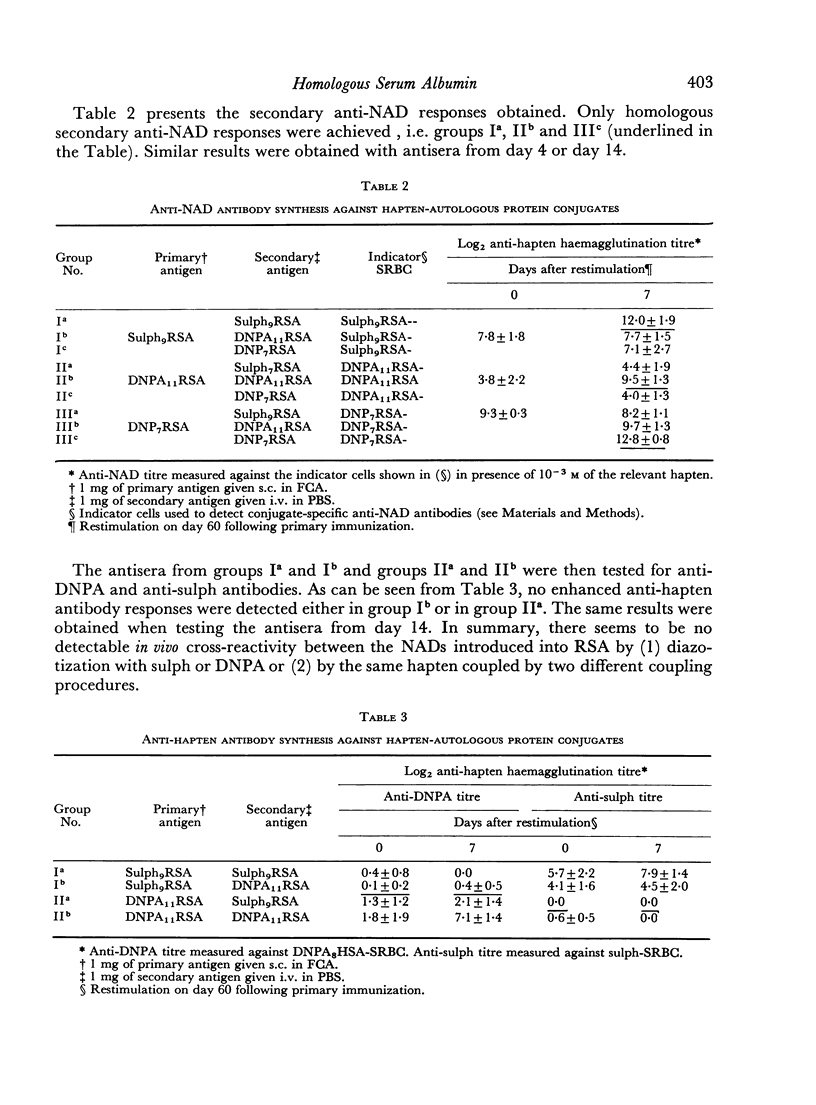
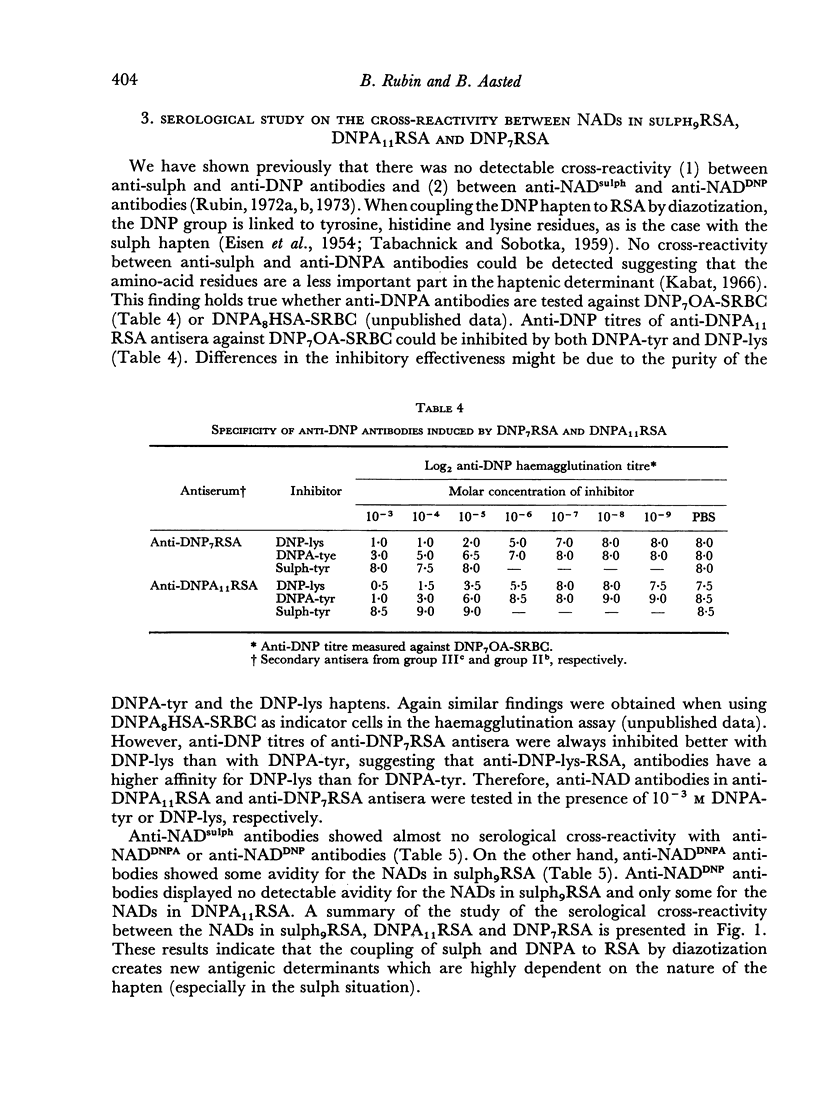
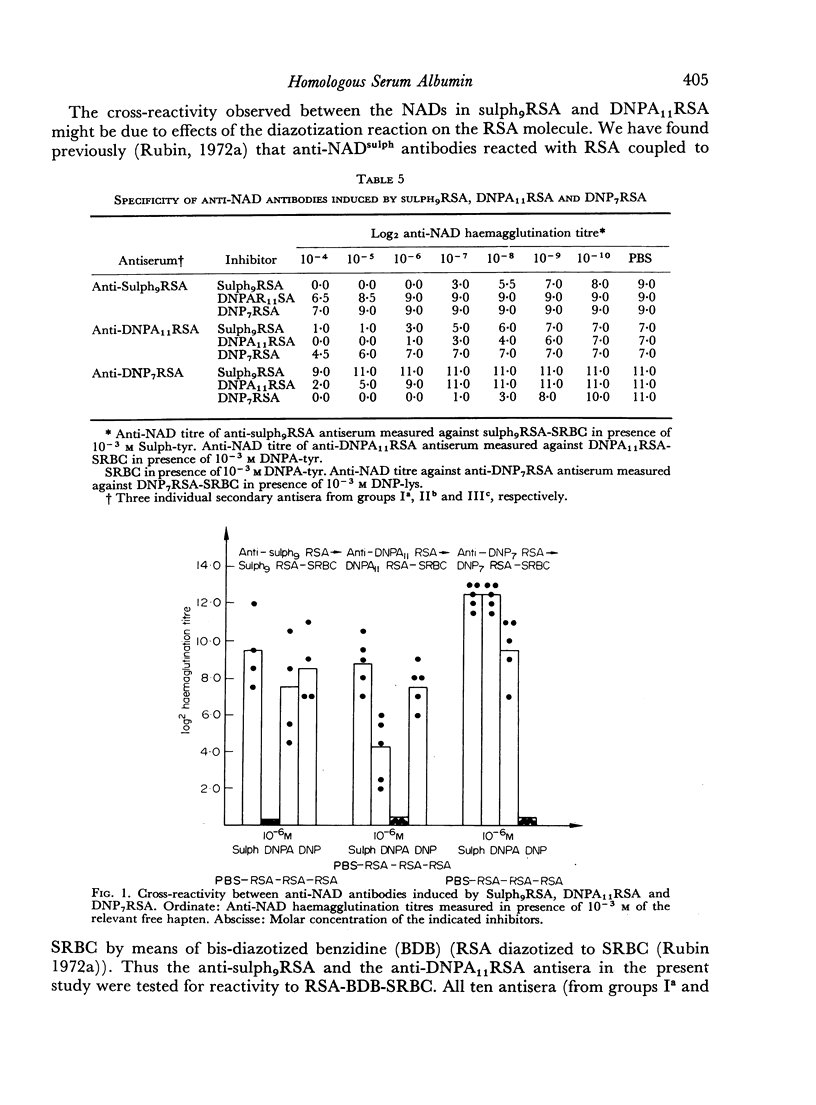
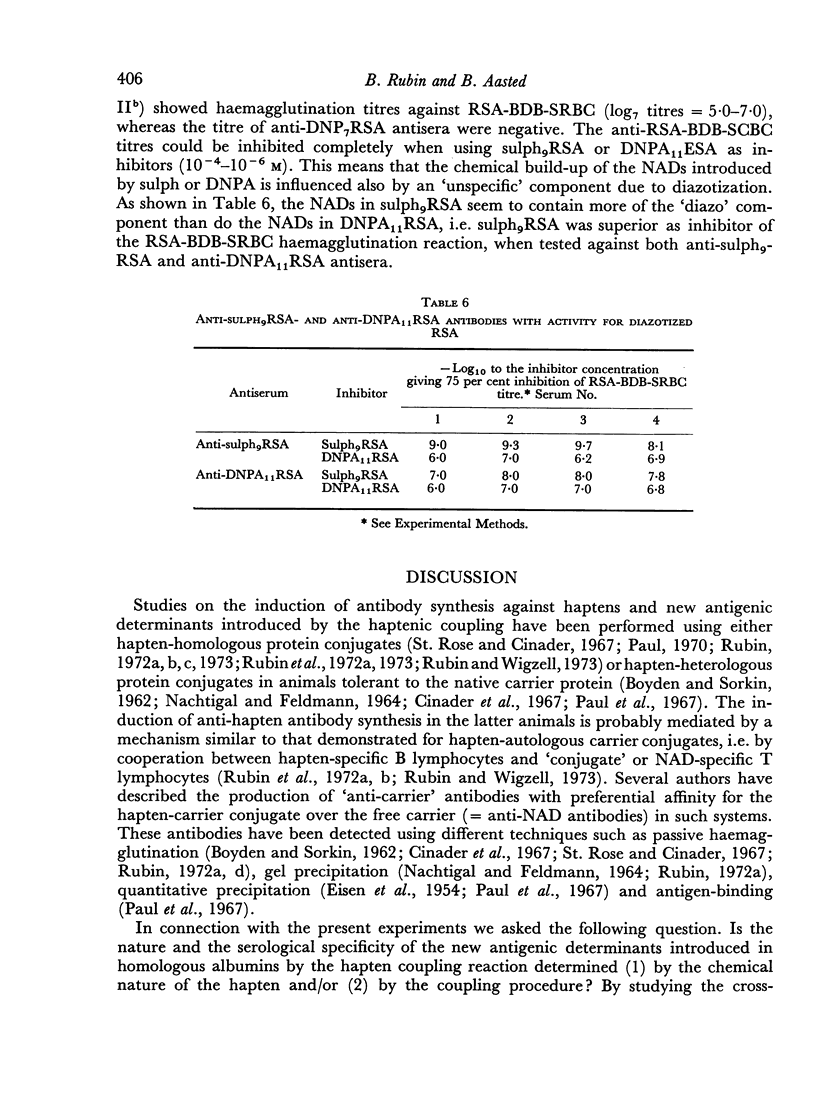
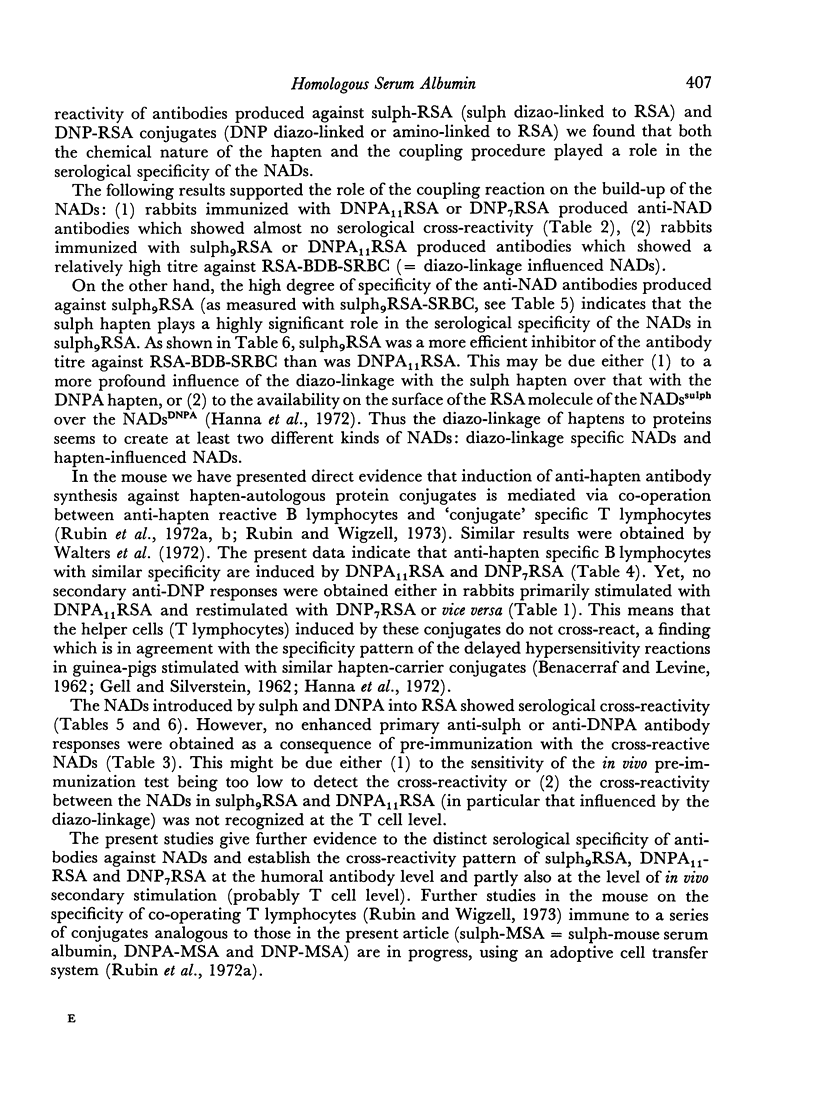
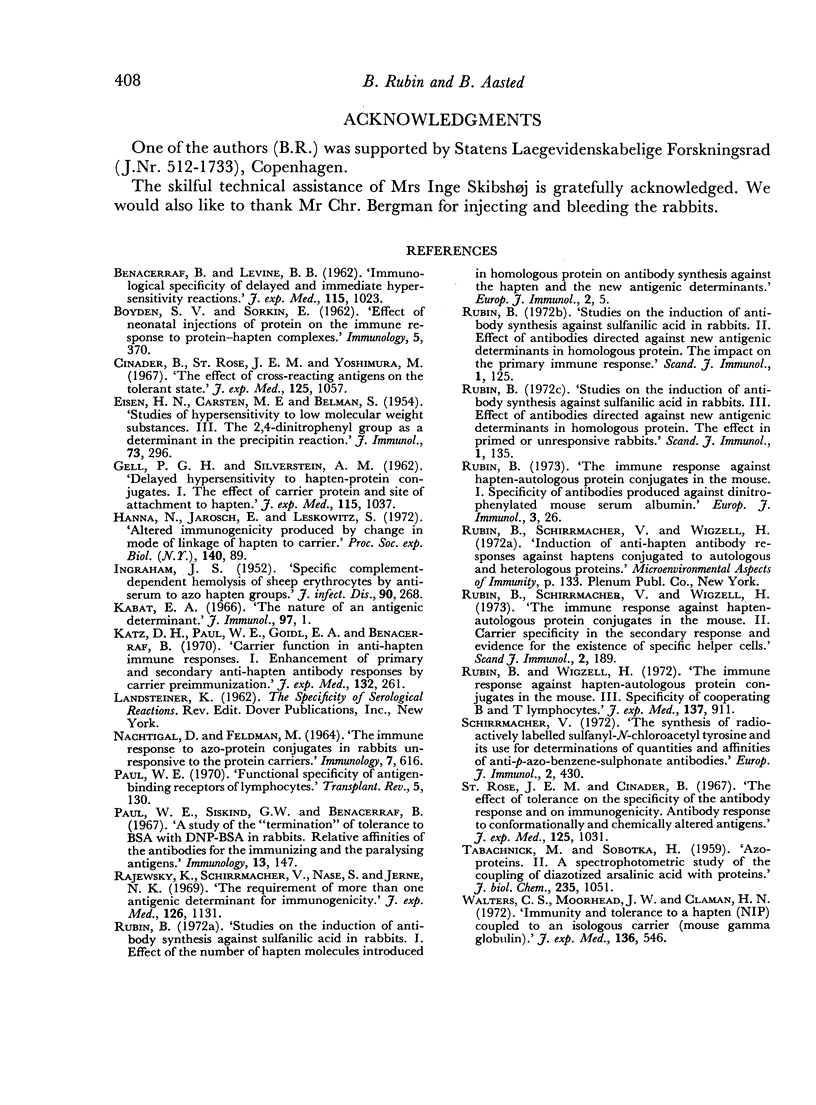
Selected References
These references are in PubMed. This may not be the complete list of references from this article.
- BENACERRAF B., LEVINE B. B. Immunological specificity of delayed and immediate hypersensitivity reactions. J Exp Med. 1962 May 1;115:1023–1036. doi: 10.1084/jem.115.5.1023. [DOI] [PMC free article] [PubMed] [Google Scholar]
- BOYDEN S. V., SORKIN E. Effect of neonatal injections of protein on the immune response to protein-hapten complexes. Immunology. 1962 May;5:370–377. [PMC free article] [PubMed] [Google Scholar]
- Cinader B., St Rose J. E., Yoshimura M. The effect of cross-reacting antigens on the tolerant state. J Exp Med. 1967 Jun 1;125(6):1057–1073. doi: 10.1084/jem.125.6.1057. [DOI] [PMC free article] [PubMed] [Google Scholar]
- EISEN H. N., CARSTEN M. E., BELMAN S. Studies of hypersensitivity to low molecular weight substances. III. The 2,4-dinitrophenyl group as a determinant in the preciptin reaction. J Immunol. 1954 Nov;73(5):296–308. [PubMed] [Google Scholar]
- GELL P. G., SILVERSTEIN A. M. Delayed hypersensitivity to hapten-protein conjugates. I. The effect of carrier protein and site of attachment to hapten. J Exp Med. 1962 May 1;115:1037–1051. doi: 10.1084/jem.115.5.1037. [DOI] [PMC free article] [PubMed] [Google Scholar]
- Hanna N., Jarosch E., Leskowitz S. Altered immunogenicity produced by change in mode of linkage of hapten to carrier. Proc Soc Exp Biol Med. 1972 May;140(1):89–92. doi: 10.3181/00379727-140-36400. [DOI] [PubMed] [Google Scholar]
- INGRAHAM J. S. [Specific, complement-dependent hemolysis of sheep erythrocytes by antiserum to azo hapten groups]. J Infect Dis. 1952 Nov-Dec;91(3):268–275. doi: 10.1093/infdis/91.3.268. [DOI] [PubMed] [Google Scholar]
- Kabat E. A. The nature of an antigenic determinant. J Immunol. 1966 Jul;97(1):1–11. [PubMed] [Google Scholar]
- NACHTIGAL D., FELDMAN M. THE IMMUNE RESPONSE TO AZO-PROTEIN CONJUGATES IN RABBITS UNRESPONSIVE TO THE PROTEIN CARRIERS. Immunology. 1964 Nov;7:616–625. [PMC free article] [PubMed] [Google Scholar]
- Paul W. E. Functional specificity of antigen-binding receptors of lymphocytes. Transplant Rev. 1970;5:130–166. doi: 10.1111/j.1600-065x.1970.tb00359.x. [DOI] [PubMed] [Google Scholar]
- Paul W. E., Siskind G. W., Benacerraf B. A study of the 'termination' of tolerance to BSA with DNP-BSA in rabbits: relative affinities of the antibodies for the immunizing and the paralysing antigens. Immunology. 1967 Aug;13(2):147–157. [PMC free article] [PubMed] [Google Scholar]
- Rajewsky K., Schirrmacher V., Nase S., Jerne N. K. The requirement of more than one antigenic determinant for immunogenicity. J Exp Med. 1969 Jun 1;129(6):1131–1143. doi: 10.1084/jem.129.6.1131. [DOI] [PMC free article] [PubMed] [Google Scholar]
- Rubin B., Schirrmacher V., Wigzell H. The immune response against hapten-autologous protein conjugates in the mouse. II. Carrier specificity in the secondary anti-hapten response and evidence of the existence of specific helper cells. Scand J Immunol. 1973;2(2):189–197. doi: 10.1111/j.1365-3083.1973.tb02029.x. [DOI] [PubMed] [Google Scholar]
- Rubin B. Studies on the induction of antibody synthesis against sulfanilic acid in rabbits. I. Effect of the number of hapten molecules introduced in homologous protein on antibody synthesis against the hapten and the new antigenic determinants. Eur J Immunol. 1972 Feb;2(1):5–11. doi: 10.1002/eji.1830020103. [DOI] [PubMed] [Google Scholar]
- Rubin B. Studies on the induction of antibody synthesis against sulfanilic acid in rabbits. II. Effect of antibodies directed against new antigenic determinants in homologous protein. The impact on the primary immune response. Scand J Immunol. 1972;1(2):125–134. doi: 10.1111/j.1365-3083.1972.tb00591.x. [DOI] [PubMed] [Google Scholar]
- Rubin B. Studies on the induction of antibody synthesis against sulfanilic acid in rabbits. III. Effect of antibodies directed against new antigenic determinants in homologous protein. The effect in primed or unresponsive rabbits. Scand J Immunol. 1972;1(2):135–141. doi: 10.1111/j.1365-3083.1972.tb00592.x. [DOI] [PubMed] [Google Scholar]
- Rubin B. The immune response against hapten-autologous protein conjugates in the mouse. I. Specificity of antibodies produced during the primary response against dinitrophenylated mouse serum albumin. Eur J Immunol. 1973 Jan;3(1):26–32. doi: 10.1002/eji.1830030107. [DOI] [PubMed] [Google Scholar]
- Rubin B., Wigzell H. The immune response against hapten-autologous protein conjugates in the mouse. J Exp Med. 1973 Apr 1;137(4):911–931. doi: 10.1084/jem.137.4.911. [DOI] [PMC free article] [PubMed] [Google Scholar]
- Schirrmacher V. The synthesis of radioactively labeled sulfanyl-N-chloracetyl tyrosine and its use for determinations of quantities and affinities of anti-p-azobenzene-sulfonate antibodies. Eur J Immunol. 1972 Oct;2(5):430–434. doi: 10.1002/eji.1830020509. [DOI] [PubMed] [Google Scholar]
- St Rose J. E., Cinader B. The effect of tolerance on the specificity of the antibody response and on immunogenicity. Antibody response to conformationally and chemically altered antigens. J Exp Med. 1967 Jun 1;125(6):1031–1055. doi: 10.1084/jem.125.6.1031. [DOI] [PMC free article] [PubMed] [Google Scholar]
- TABACHNICK M., SOBOTKA H. Azoproteins. II. A spectrophotometric study of the coupling of diazotized arsanilic acid with proteins. J Biol Chem. 1960 Apr;235:1051–1054. [PubMed] [Google Scholar]
- Walters C. S., Moorhead J. W., Claman H. N. Immunity tolerance to a hapten (NIP) coupled to an isologous carrier (mouse gamma globulin). J Exp Med. 1972 Sep 1;136(3):546–555. doi: 10.1084/jem.136.3.546. [DOI] [PMC free article] [PubMed] [Google Scholar]


